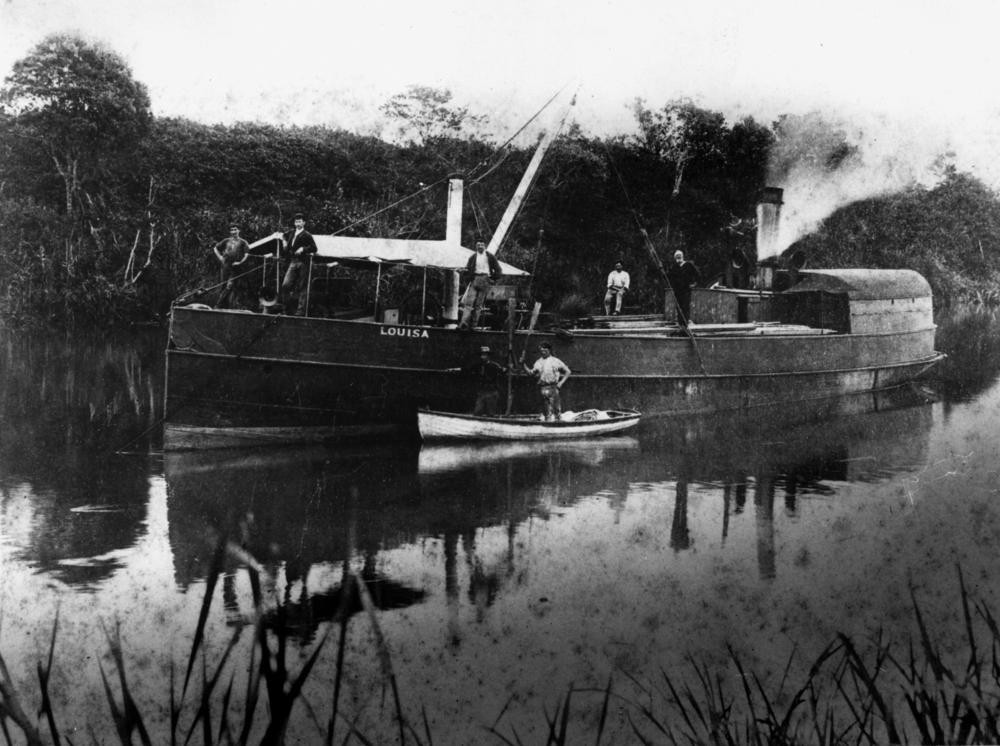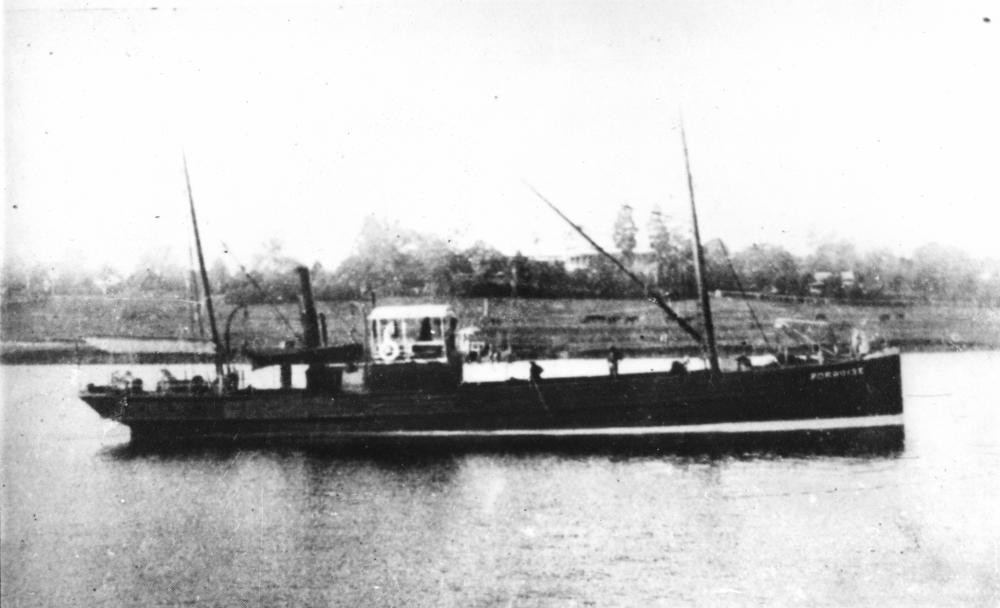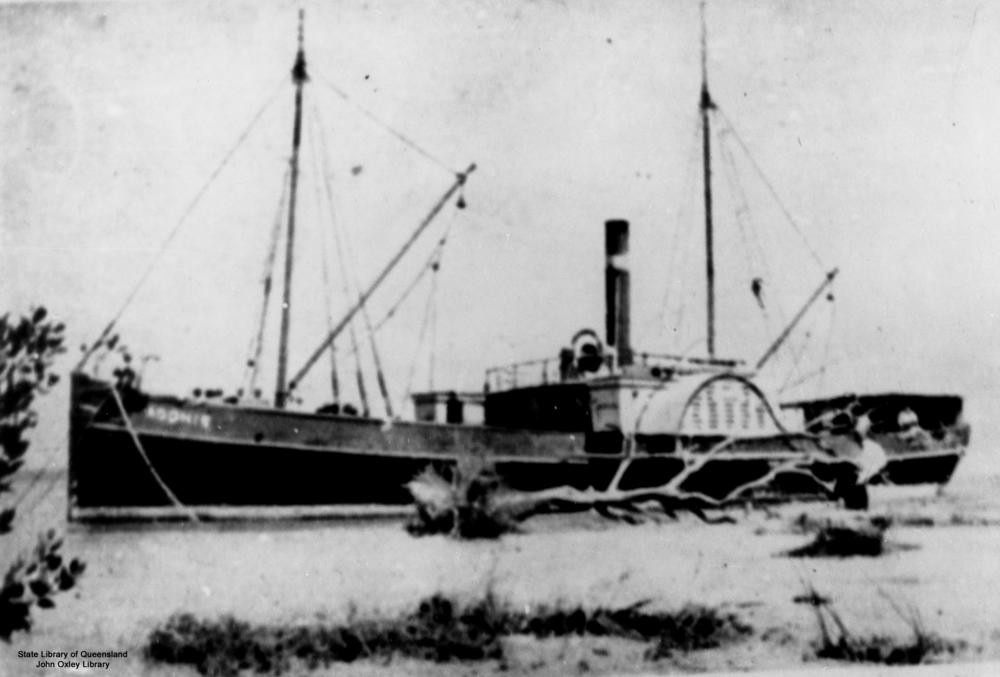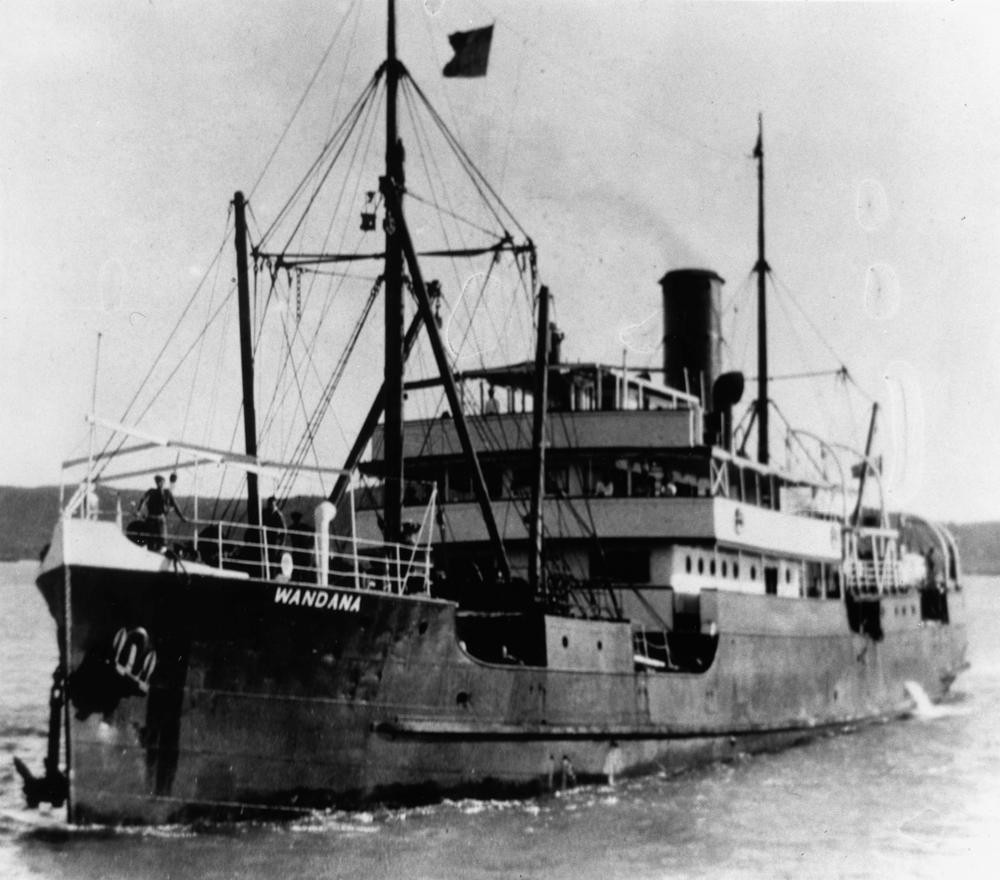Burke's flaming ocean - coastal shipping in Queensland
By Simon Miller, Library Technician, State Library of Queensland | 3 September 2012
'Burke's Flaming Ocean' was a name given to the Gulf of Carpentaria in tribute to John Burke Limited, a great Queensland company that for many years provided the only means of transport to isolated communities in the Gulf and on Cape York.
John Burke came to Brisbane in 1862 as an able seaman on the Erin-go-bragh, an old sailing ship bringing Irish immigrants to Queensland. The young seaman, having fallen for Alice Swords, one of the immigrants, and not wishing to leave her alone in a strange country, promptly jumped ship. John Burke is said to have arrived with a personal fortune of sixpence, which he always claimed, in the best traditions of the sea, to have spent on rum. The Queensland authorities were enthusiastic about all new settlers and were not bothered about rounding up deserting sailors and Burke's skills as an experienced seaman soon gained him employment on the water.
He obtained a berth on the Honeyman and Sons steamer Louisa and being an ambitious man studied for and obtained his Master's Certificate. He was soon given command of a small steamer, the Fanny, and in 1887 he had an opportunity to prove his courage and skill. During a series of floods in that year a group of 53 people were trapped by the rising Logan River. Burke successfully steered his small craft up the fast flowing river and rescued the stranded flood victims. For this effort he was rewarded with a gold watch, an illuminated address and a testimonial letter from the government.

The floods also brought opportunity as his employer, Honeyman and Sons, decided to sell up their shipping interests and Burke took the opportunity to purchase his first vessel the Louisa. Louisa was the first iron hulled steamer built in Brisbane. She was built by prominent Brisbane manufacturing company R.R. Smellie & Co and launched in 1872 when it was reported that "she glided into the water as gracefully and evenly as a sea bird". Louisa was built to ply the Brisbane River between Brisbane and Ipswich and also regularly traveled to the Logan and Albert Rivers. With this vessel, a staff of three men and his son John E. Burke to do the clerical work, John Burke established a company that would trade up and down the Queensland coast for over a hundred years.
John Burke soon purchased new boats, the 64 ton steamer Eucalypta and a steam tug Sir Thomas. In 1908, with the aim of starting a coastal service, Burke bought the 91 ton steamer Porpoise from the Australasian United Steam Navigation Company. The Porpoise was fitted with new boilers and engine and the company began operating on the coast in what the larger companies called 'pirating', or trading anywhere cargo was offered. Other vessels joined the line including the paddle steamer Adonis and some sailing ships, the schooner Envoy and ketch Noosa.

In 1915 a limited company was formed and the original John Burke retired from active leadership of the company. His son John E. Burke became Managing Director and a third generation joined the firm when John A. Burke returned from war service. The first John Burke died in 1918 having built up his company from a single vessel to a small coastal fleet. The company's operations expanded up the coast with Porpoise, Adonis and another ship Nautilus carrying large quantities of material for the construction of the North Coast Railway to Cairns.

The company benefited from frequent strikes that crippled the larger shipping lines. Burkes could still obtain crews for their smaller ships, often using volunteer labour, and kept their services running. John E. Burke made light of troubles with the unions explaining a change of colour scheme, the company's ships originally having been all painted Irish green. "But we were declared 'black' so many times by the strikers that we thought we might as well change our colour. And painted black they were, with only the funnels remaining green."
Opportunity came to the company in 1920 over a dispute between the Queensland Government and the Australasian United Steam Navigation Company. The A.U.S.N. Company had been running a service to Normanton in the Gulf of Carpentaria since the 1890s. The port of Normanton was very important for the discharging and loading of cargo from the gold fields at Croydon but was only profitable because of a substantial mail subsidy from the government. When the A.U.S.N. Company started to lobby for substantial increases in the subsidy and also the freight charges the government countered by purchasing their own ship, the Douglas Mawson. This was not a success and the government ship was losing large amounts each year. In 1920 John Burke Ltd stepped in and offered to run a regular service from Brisbane to the Gulf ports via Townsville, Cairns and Cooktown provided the company received a government subsidy that was much less than the losses they were making with their own ship. The government readily agreed and the company purchased the Kallatina for the job. The ship was already thirty years old but the company was able to operate the ship on the demanding run for another eleven years.
In 1923 the Kallatina's boiler had to be replaced and the company needed to charter another vessel for the run. The only ship available was the Queenland Government's ship Douglas Mawson which was sitting idle in Brisbane. The Douglas Mawson sailed north and in due course arrived at the mouth of the Albert River where cargo was unloaded for Burketown. The ship set out on the return journey towards Thursday Island but was overtaken by a cyclone and was lost without trace. After this loss the overhaul of the Kallatina was soon completed and the service returned to schedule. Kallatina continued its vital role serving the isolated towns of the far north until it was damaged when driven aground on Green Island in 1927. Another ship was chartered to take over, this time without disaster, but financial problems threatened the company. John E. Burke met his creditors and argued that the people of isolated towns in the north depended on the service and than no other shipping line would take the trouble to go there. His arguments won the day and the company was able to purchase the Wandana to replace the 41 year old Kallatina. Wandana carried on the northern run until 1948 when she was replaced by the Elsanna.

In 1964 the government withdrew the subsidy from Burke's and awarded it to Cairns based company K. Holland Shipping on the basis that they would be able to offer a better service by sea, road and rail. This decision meant that there was no longer a regular passenger service along the Queensland coast. The loss of the subsidy was a severe blow to the company but new mining developments on Cape York helped them carry on. In 1965 the company wharf and office at South Brisbane was resumed by the Brisbane City Council forcing them to move their operations downstream. The third John Burke was now seventy two and he decided to sell the family company to the powerful Dillingham Corporation in 1969. John A. Burke, grandson of the founder, died in 1972.
Coastal shipping was now unprofitable and the company tried to expand into the New Guinea trade and the company's ships were re-registered in New Guinea to save money. The John Burke, the only vessel to be named after the Burkes was renamed Nuigini Kula. This new venture was not successful and the company was wound up in 1990 after 102 years of operation.
Information on the history of John Burke Limited was taken from these books in the State Library collections:
A saga of the sea : being an historical survey of the foundation and progress of the House of John Burke Limited by D. J. Doyle 1937
'Douglas Mawson' story and The John Burke story by Alan Smith 2001
Steamers on the river from Ipswich to the sea by William Torrance 1986
Simon Miller - Library Technician, State Library of Queensland
Comments
Your email address will not be published.
We welcome relevant, respectful comments.